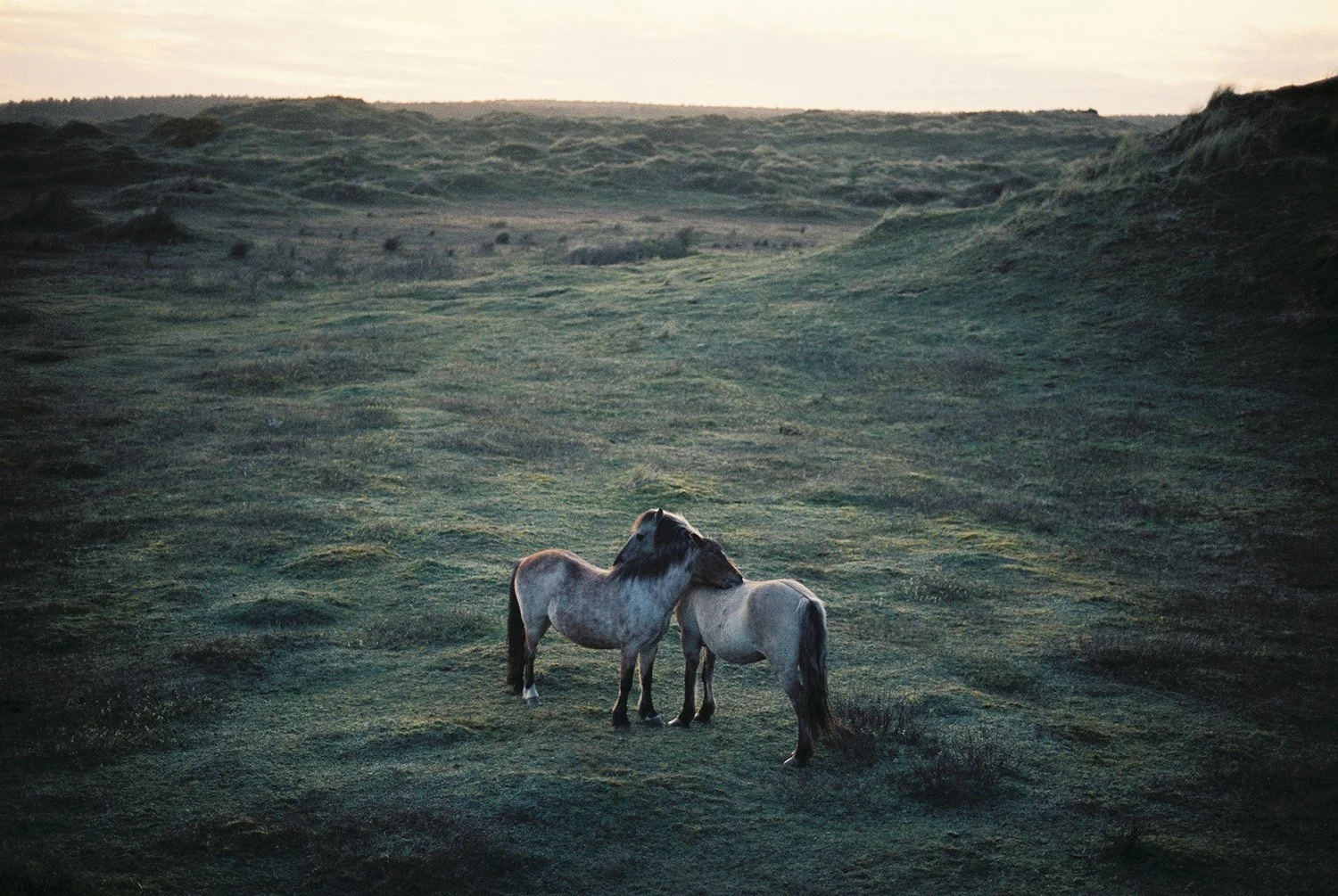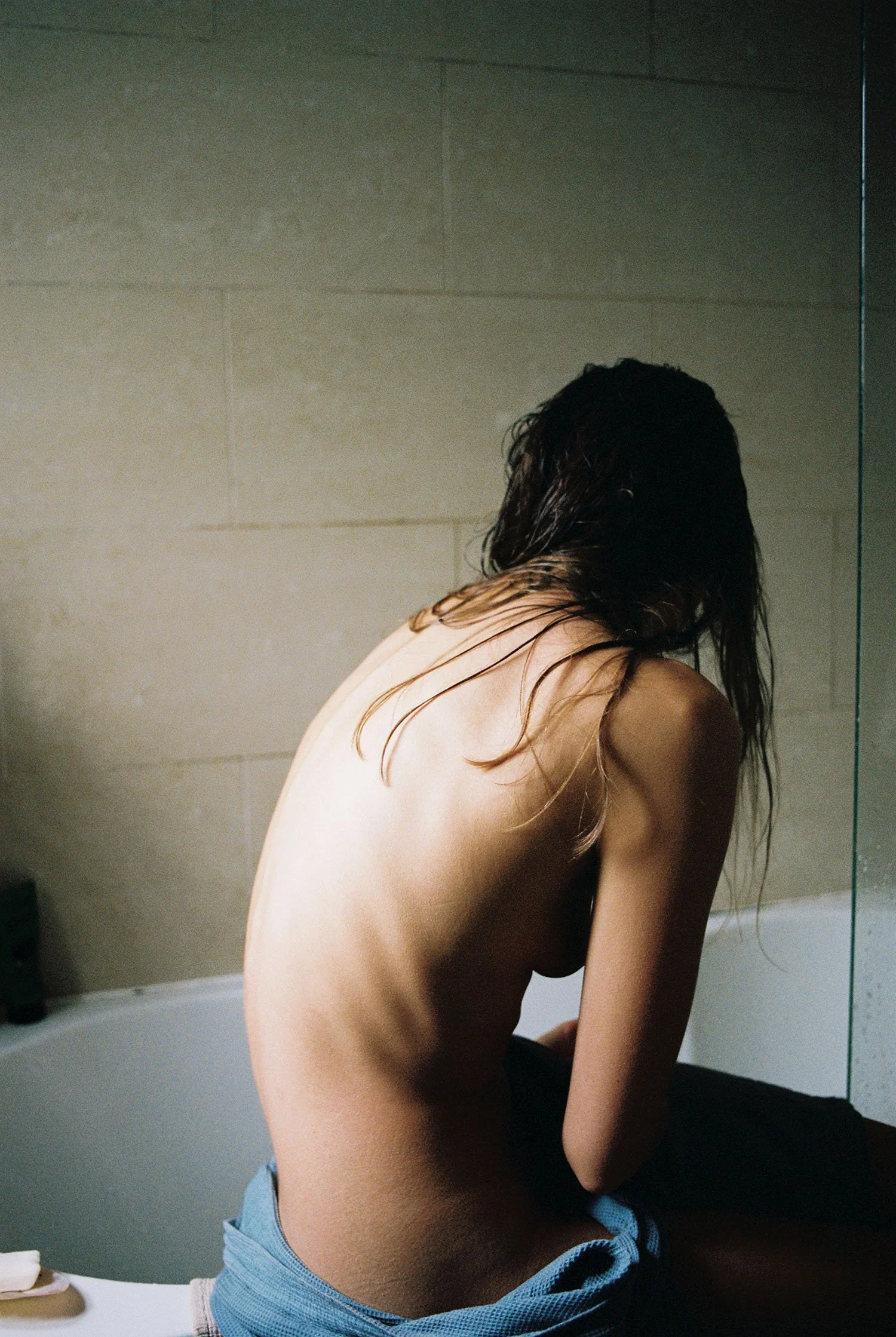019 – Bi-Monthly Series by Setanta Books
In 2017, Lena Aires decided to quit her job in London and return to her hometown in North Wales. In the countryside, where the time slows down and the connection to nature is appealing, Lena rediscovered herself and found her passion for photography. Lena speaks about her fascination with the beauty of the landscapes and brings an example of the connection formed with a wild herd of horses over the years that allowed her to come closer and make images of them.
“There is something particularly beautiful about the plants and animals around this time when the light is fading. The colours are soft but intense, there is a stillness but also a movement rippling underneath everything, a combination of opposites.” – Lena says.
In this interview, we speak with Lena about her recent photo book, which she worked on for the past five years, published as part of the ongoing Bi-Monthly series by Setanta Books. We discuss the work on the editing and layouts, aiming to create a serene atmosphere and a connection with nature, along with making the content personally meaningful that would also appeal to the viewer. The photo book reflects the poetic aspect of Lena’s work, weaving together the external and internal worlds. The natural element is threaded into a cohesive narrative by means of adding self-portraiture and allowing the viewer to dive into Lena’s personal experiences, and get closer to the self-discovery that is carefully crafted through the images.
Photography by Lena Aires Published by Setanta Books Special thanks to Alex Buchan
Get your copy at Setanta Books
Softcover
48 Pages
21cm x 16cm
card wraparound cover
350 copies
‘ I started going out into nature a lot with my camera. Out on the coast and in fields, by hedgerows, it made me feel connected to the land again.’
The Artist
Hi Lena, it’s nice to meet you. First of all, congratulations on the publication of your book, Lena Aires, with Setanta Books as part of their ongoing Bi-Monthly series. Let’s start and speak about you as an artist before diving into the book. Could you tell about yourself and your experience working on this project?
Sure, I grew up in a small town in North Wales, and after many years of studying and working in London, I ended up quitting my job and moving back home in the summer of 2017. Being back in the countryside and outside of city life meant I suddenly had more free time and more space. There was an opportunity for something, and photography found its way to me. I started going out into nature a lot with my camera. Out on the coast and in fields, by hedgerows, it made me feel connected to the land again. I’ve always felt more at home in nature. I would head out mostly in the evenings just before and after sunset. There is something particularly beautiful about the plants and animals around this time when the light is fading. The colours are soft but intense, there is a stillness but also a movement rippling underneath everything, a combination of opposites — everything seems to come alive in a new way, and there is a lovely glow to things. I went to old churches and loved photographing them and the spiritual presence I felt there. I visited a herd of wild horses and slowly built trust with them over the years and learnt how to get close and photograph them.
That summer planted the seed for inviting a more imaginative and creative space into my life, a desire to find meaning through taking pictures, and it has been growing ever since. I started to put myself in the frame and make self-portraits in these places. It felt like a natural progression and instinct to want to add the human element in the frame, as a lot of the landscape shots alone seemed lacking in something. During Covid, I was at home a lot like most of us, and I made a huge body of work of self-portraits and still life images; it became very diaristic, documentary. Living in a small flat, I was quite restricted with space, but it made me much more creative and opportunistic. I even surprised myself with what I created in these three small rooms. It was a period of strong creativity for me — playing with the light and experimenting with film. I wanted to find the quiet moments and document myself and my environment during that time. I was obsessively taking pictures and enjoying the process so much.
‘I also found that, for me, it can be a lot about the narrative expressed over a series of images, not necessarily one particular image.’
The Experience
The project took you several years to work on while exploring North Wales, the location close to your heart. The viewer is introduced to beautiful landscapes, and interiors of houses, we contemplate wild nature, meadows and prairies, and beautiful images of horses. The story is intertwined with your self-portraits that frame the narrative and the story that is unfolding. What was the main learning experience for you about yourself as a photographer or the subject of the story throughout the process?
The creation of this project was a huge part of my photography journey. It was the start of it, really, an important period of growth and learning, both personally and with regard to the photographic process and my discovery of art. I learnt a lot about the subtleties of what can make a beautiful and meaningful photograph — a human gesture, the quality of light, an interesting form or colour combination that makes you feel something.
With regard to myself as a photographer, I think it taught me what I value the most and what I want to capture in a photograph — how I like to find the quiet and tender moments and gravitate towards the more fragile things, the vulnerability of them. I think, on a deeper level, it is the connection to the spiritual that I seek out and want to capture ultimately, which I guess encompasses a lot of what I’m talking about, the beauty and ephemerality of the natural world, of light, of colours, of humans. These things help me feel more connected to things outside of myself, and photographing them feels like a way to be closer to that.
Making photos has been such a powerful and wonderful thing in my life; you learn so much about the world and yourself. I also found that, for me, it can be a lot about the narrative expressed over a series of images, not necessarily one particular image, but subtle ideas that weave their way through several photographs. I really like the idea of a theme that keeps moving from one image to another.
‘I was rediscovering the island and myself through my old Olympus that only had an automatic setting. I did later invest in a better one, but I loved it and loved creating images with it.’
The Theme
The main themes in the book are the quietness and the state of being alone while connecting to nature and the self. Another connection is to the technical side of a very subtle light in the images that creates a thread, adding to the atmosphere, and emphasizing the serenity and peacefulness. What was this period of taking the images and living in North Wales like for you?
That’s a perfect summary of the book. I guess after having lived in the city for many years, moving back to the countryside was like a big pause, space to breathe and space to be. It was the first time I had an apartment to myself and a car; it felt like a new chapter was beginning, but I didn’t know, at the time, that it would be a move into photography. Looking back, it seems so apparent that there was a big space there for it, and once I picked up my camera and started taking pictures, it seemed to happen so effortlessly and organically as if it was meant to be.
I was rediscovering the island and myself through my old Olympus that only had an automatic setting. I did later invest in a better one, but I loved it and loved creating images with it. The self-portraits came gradually a bit later, but for me, they all merged during this period. Overall, despite a lot of life challenges that come with moving somewhere rural, being in nature and living a slower pace of life nurtured my creativity in such a strong way. The time and space I had meant I could play and experiment with photography and be where I am today.
‘ I’m so used to pouring over my images at night alone with my music on and tea, so it was a lovely experience to hear someone else’s thoughts and perspective on my work.’
The Publisher
When speaking about the creation of the narrative and then working on the selection of images for the publication, deciding on the order and spreads, and the images that will not make it to the final product, what was the most important part for you in the process of working with Setanta Books?
I really loved the whole process. I’m quite a private person, but allowing someone into my world of images and talking about them was a really lovely experience, thanks to Martina. I felt like she understood my work, and we both agreed from the start on pretty much everything that was to go into the book. I remember the first edit she sent me, I loved it, and it really motivated me. Maybe that was the most important part, opening up that dialogue. I’m so used to pouring over my images at night alone with my music on and tea, so it was a lovely experience to hear someone else’s thoughts and perspective on my work. But also just the process of bringing my work together, making albums, selecting images, thinking about which ones are more meaningful or add to the story in a more cohesive way, that part is just invaluable as a photographer. Making the book has motivated me in my artistic practice and reminded me how important it is to hold that imaginative space to allow yourself to create and think outside oneself, outside of day-to-day life.














